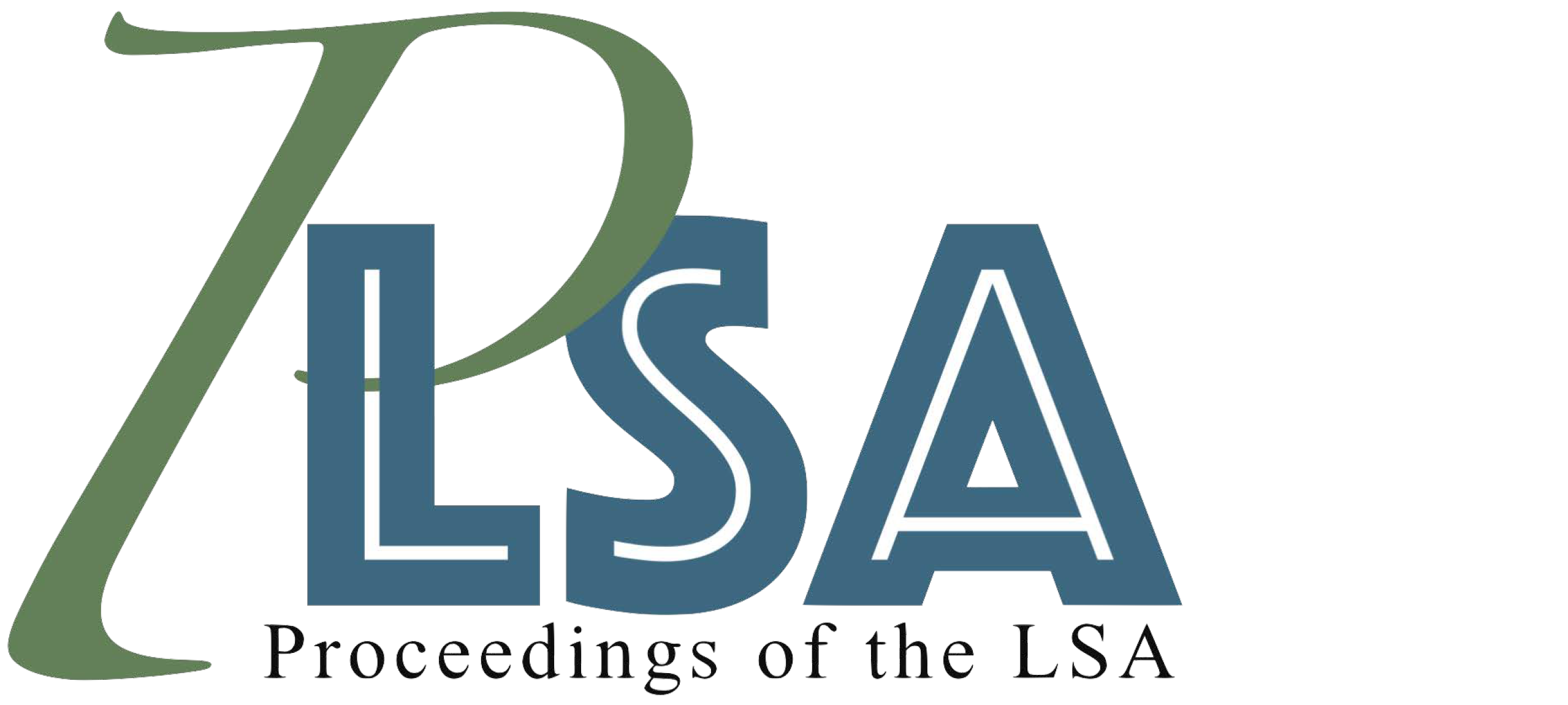Evidence for perceptual hypercorrection in American r-dissimilation: A pilot study
DOI:
https://doi.org/10.3765/plsa.v4i1.4549Keywords:
dissimilation, hypercorrection, rhotics, speech perceptionAbstract
We tested Ohala's (1993) theory that dissimilation results from perceptual hypercorrection for assimilation. We created nonce words by splicing syllables containing /r/ to continuations that either did or did not contain another /r/. When listeners were asked to type these nonce words, they were significantly more likely to omit the first /r/ if there was a later /r/. This is consistent with Ohala's claim that one rhotic can perceptually mask the presence of another rhotic. The patterns of r-dropping mimics the characteristics of real English r-dissimilation, in which speakers tend to drop the first /r/ from words like surprise. We argue that perceptual errors are a plausible cause of the actuation of r-dissimilation, although other articulatory or processing constraints may contribute to its persistence.Downloads
Published
2019-03-15
Issue
Section
Articles
License
Published by the LSA with permission of the author(s) under a CC BY 4.0 license.
How to Cite
Hall, Nancy, Bianca Godinez, Megan Walsh, Irene Orellana, and Coleen Villegas. 2019. “Evidence for Perceptual Hypercorrection in American R-Dissimilation: A Pilot Study”. Proceedings of the Linguistic Society of America 4 (1): 52:1–12. https://doi.org/10.3765/plsa.v4i1.4549.
